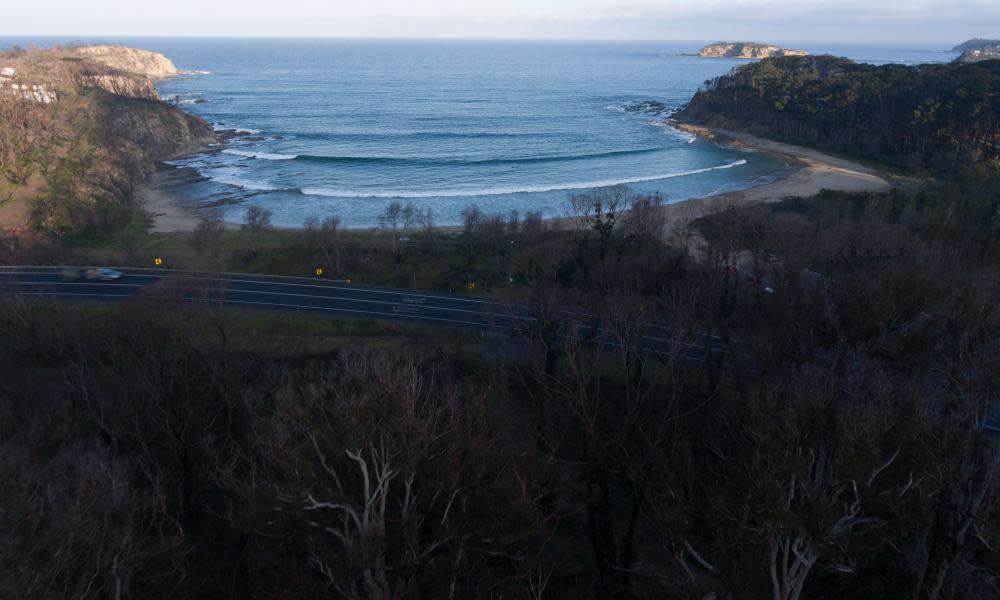WWF Australia creates legal fund to fight projects threatening forests after Black Summer bushfires

WWF Australia is setting up a legal fund for community groups to challenge development decisions in forests they say are under threat from land clearing in the aftermath of the 2019-20 bushfire disaster.
The funds will pay for legal firm the Environmental Defenders Office to represent communities in areas such as the South Coast of New South Wales, where the destruction of habitat that could provide refuge to threatened wildlife has been fiercely contested since the Black Summer fires.
The move is in response to a new report by WWF which identifies unburnt forest in six areas on Australia’s east coast that the environment group says require increased protection and restoration following the fires.
The six areas are the Border Ranges in Queensland and NSW, Nymboida, the Yengo-Wollemi, the north and South Coasts of NSW, and the Eden-Gippsland region across NSW and Victoria.
Related: NSW urged to stop logging native forests after fires wipe out up to 30% of timber supply
The forests cover a range of land tenures including national parks and state forest as well as private land.
“These six regions are the arcs of most of the wildlife on the east coast,” said Stuart Blanch, a conservation scientist with WWF Australia.
Since the fires there has been community opposition in some of the worst-hit areas to proposed developments and the resumption of other activities, such as forestry.
The federal environment minister, Sussan Ley, agreed last year to assess a residential development proposed for the South Coast after a community group, Manyana Matters, raised concerns about its potential effects on threatened species after the fires.
The NSW government has also commissioned a review of logging operations by the NSW Forestry Corporation amid a growing dispute between the forestry agency and the Environment Protection Authority over post-fire logging rules.
The chief executive of the Environmental Defenders Office, David Morris, said the new legal funding could be used for court actions similar to the Manyana case, which the office provided representation for.
However, he said communities often sought assistance that did not involve taking action through the court system.
That could include making submissions to public inquiries about environmental issues, advocating for upgraded protections for particular species, or speaking directly to governments about decisions that did not adequately protect the environment.
“We are dealing with unprecedented fire damage on the east coast and a wildlife emergency for dozens of threatened species,” Morris said.
“The EDO will assist the community to use every appropriate legal mechanism to protect these priority landscapes.”
Morris said government decisions about the environment, particularly those that affected surviving habitat near areas that were badly burnt, needed to factor in the “new reality” that the disaster had pushed many species to the brink.
Related: Coal seam gas company pushes to drill hundreds of new wells at off-limits Queensland site
The koala, currently listed as vulnerable under national laws, is being considered for an official endangered listing and several other species are being assessed to determine whether they should also have their threat status upgraded.
The independent threatened species scientific committee is expected to provide its advice to Ley by October.
Last year, the independent review of the Environment Protection and Biodiversity Conservation Act, chaired by the former competition watchdog head Graeme Samuel, found successive governments had failed over two decades to properly protect Australia’s wildlife and called for an overhaul of Australia’s laws.
The government is still considering the bulk of the review’s recommendations.
David Lindenmayer, a professor of ecology at the Australian National University, said the effects of the bushfires made the need for stronger protections more urgent and it often fell to communities to advocate for their local wildlife.
“The extent of the fires was so substantial that if we want to hold on to our biodiversity we’re going to have to think about significant increases in protection,” he said.
Comment was sought from Ley.

 Yahoo Movies
Yahoo Movies 
